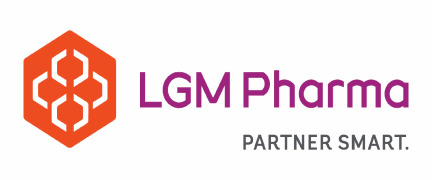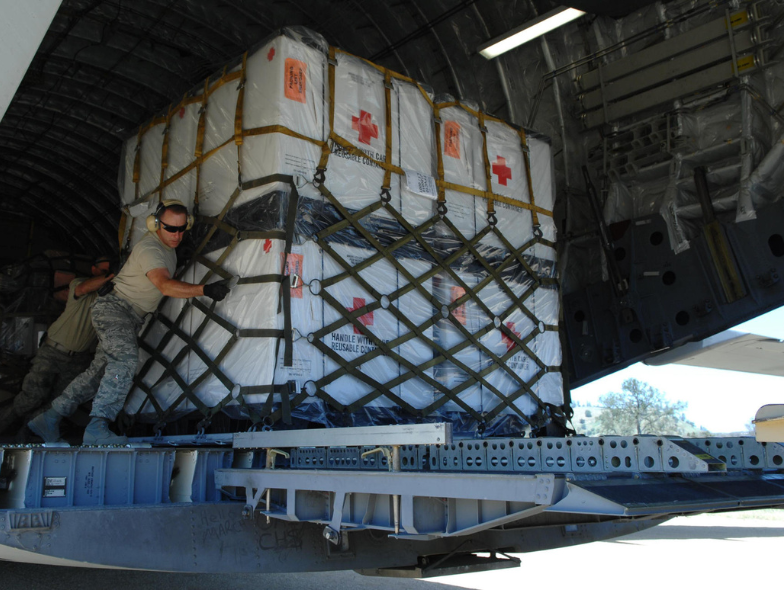Building supply chain resiliency to ensure access to medicines

With CPHI North America fast approaching, we ask Karen Flynn (President, Biologics & Chief Commercial Officer, at Catalent), Hamilton Lenox (Senior Vice President of Business Development, Sales & Marketing, at LGM Pharma), and Mike Kleppinger, Chief Commercial Officer, at AMRI) to weigh in on strategies the industry can use to build supply chain resiliency which ensure uninterrupted access to medicines
Supply chain challenges have been with us for years. Complications, including drug shortages, unforeseen closures, regulatory shutdowns, and mishandling in transit, have increased, and as a result, supply chains have become a source of deep anxiety. In the early days of the pandemic, supply chains stretched nearly to the breaking point. All of this has intensified scrutiny of their length and complexity as well as the risks they pose to the availability of medicines.
The question of how to bolster supply chain resiliency has raised a number of proposed solutions, including the need to return the drug industry to American shores. But while calls to reshore drug supply chains to the US have become popular, the real question may be: is it even feasible? It depends on how one defines reshoring.
At the extreme – and generally regarded as impracticable – is the complete reshoring of the entire industry (and its strategic allied partners and suppliers) to domestic shores. Even the most stubborn among such a policy’s supporters acknowledge that some aspects of drug discovery, development, and manufacturing will necessarily reside abroad.
Other more pragmatic proposals and supply chain strategies emphasize stability of supply. They typically involve supplier-, facility-, source-, or geographical redundancy, reshoring portions of the supply chain, or a combination of these elements
The right question?
Our experts’ consensus around whether or not the pharma industry can be successfully brought back to the US is that it may not be the right question. Catalent’s Flynn points to an already-growing domestic industry presence: “For biologics and the sterile injectable markets specifically, there is already a very healthy manufacturing footprint in North America today.”
Hamilton Lenox of LGM Pharma – itself recently in the news for acquiring a domestic CDMO – concurs. “US capacity is, in large part, tied up with novel therapeutic production. We would have to either diminish our focus in the US on novel therapeutics to create capacity for generic production, or we would have to build out additional capacity.”
While there are advantages, reliance on domestic supply chains also has its risks. Much like the dangers that can – and have – arisen by dependence on foreign facilities, domestic plants can be shut down for many reasons – from extreme weather and fires to political unrest or compliance concerns.
AMRI’s Mike Kleppinger, sums it up: “Relying too heavily on a single geographical location opens up considerable risk when it comes to assuring uninterrupted drug supply. The SARS-CoV-2 outbreak has brought these concerns to the forefront, as the Chinese government mandated temporary factory closures at the beginning of the pandemic and India restricted exports of some pharmaceutical ingredients amid fears of global shortages.”
Amid the pandemic, many see decoupling from China as a key strategic goal. Our experts are split on what – precisely – that means for reshoring. Lenox points to essential drugs as a potential target for domestic production: “Whether you want to look at it from a national security perspective, or a healthcare perspective, what are the essential therapeutics that we really have to maintain a supply of in the US? We need to have a deeper understanding of the risk factors in the supply chain for pharmaceuticals, as well as other supply chains that are critical for national security.”
Rather than emphasizing the return of all operations to US shores, those we spoke with underscored that reducing risk and ensuring supply chain resiliency is dependent on a broader range of strategies.
Flynn, Lenox, and Kleppinger all concur that reshoring isn’t a binary choice. According to Flynn, “if the drug will be launched into multiple markets, or an initial launch in one market, followed by follow-on markets, then it may make sense set up a global network of manufacturing facilities to serve your patient populations.”
“By qualifying multiple facilities, as well as choosing facilities in different regions, countries, etc., a company can help ensure continuity of supply if an unforeseen issue occurs in the country of origin or, as we have seen through the pandemic, along the transport route, and across borders,” Flynn continues.
Dual sourcing
AMRI has adopted a similar approach based on redundancy. “With supply chain continuity underpinning the timely delivery of urgently needed drugs to patients, dual sourcing has become an established mode of operation. Yet for dual sourcing to be effective, whenever possible, it is important that both sources are located in different geographies and that each has its own distinct supply chain in place.”
Lenox also points out the importance of qualifying multiple suppliers. “Having a single source is a huge risk, regardless of where that company is located. If there's a fire, tsunami, earthquake, a tariff situation or geopolitical disruption, you are in a very poor position and are likely going to have shortages of that drug. Because of the cost to qualify a secondary source, generic companies typically don't do so. That's something that's likely going to need to change in the future.”
Kleppinger shares where the product will be launched, production volumes, and dosage forms are key drivers. “Onshore and offshore options are not only a cost-play but also a commercial launch strategy. If a source is approved in both the US and Europe, launching becomes far easier from a regulatory perspective.”
Flynn also acknowledges the importance of launch strategy. “It will really depend on the commercial strategy that the sponsor company has for their drug. We find that some sponsors value having their manufacturing in the region of the patients that their drug will serve. On the other hand, for programs that may require unique technology or expertise, sponsor companies may be limited to using facilities that have the right fit of capabilities and/or availability when the sponsor needs it. In such cases, location may not be the biggest driver.”
As for a complete decoupling from foreign suppliers, the likelihood seems slim – at least in the short term. “The short answer is no, right now we cannot completely decouple from China,” says Lenox. “In the longer term, yes - but only if we have a comprehensive strategic plan to bring manufacturing capacity back to the US from China as well as India, and which takes generic therapeutics into consideration.”
The right approach may be to focus less on pharma’s return to US shores and instead take prudent steps to secure supply chains and create redundancies around the globe to ensure reliable access to medicines.
Want to learn more about this and other topics related to pharma in North America? Join us at CPHI North America this summer - online July 19 - August 13, and in-person August 10-12 in Philadelphia, PA. Registration is now live and tickets are free until July 18th!




Related News
-
News On Track at Pharmapack 2024 - The Track Sponsor interview: BD Pharmaceuticals
January 2024 brings both a new year and Europe’s leading packaging and drug delivery event. Bringing the world’s experts in pharmaceutical packaging together in Paris, France, Pharmapack 2024 brings exciting opportunities to learn and colla... -
News Patients vs Pharma – who will the Inflation Reduction Act affect the most?
The Inflation Reduction Act brought in by the Biden administration in 2022 aims to give better and more equitable access to healthcare in the USA. However, pharma companies are now concerned about the other potential costs of such legislation. -
News Roche breaks into the obesity drug market with the acquisition of Carmot Therapeutics
In a bid to diversify their therapeutic offerings, Roche takes over Carmot Therapeutics in $2.7 billion deal, with one obesity drug spearheading the venture into the field as they prep for a Phase II in-human trial. -
News Biden backs Cold-War measures to shore-up medical supply chains
In a recent strategy to combat rising inflation and the cost of living crisis, President Joe Biden has invoked a Cold War-era act to increase investment in a selection of medicines and supplies. -
News Women in Pharma: Delivering solutions for gender diversity
In our new monthly series, we interview women from across the pharmaceutical industry and supply chain to discuss the importance of gender diversity in healthcare, the workplace, and beyond. -
News CPHI Barcelona Speaker Interview – What the US FDA’s Quality Management Maturity Means for the Pharma Industry
At CPHI Barcelona (24–26 October, 2023), we spoke to Sireesha Yadlapalli, CEO of Pharmatech Associates, who gave a presentation on the implications of the US FDA’s Quality Management Maturity (QMM) Initiative, and spoke on the panel of the ... -
News CPHI Podcast Series: What does the changing US Pharma market mean for industry and patients alike?
In this week's episode of the CPHI Podcast Series Lucy Chard, Digital Editor for CPHI Online is joined by James Manser to discuss the political and market changes in the US pharma field. -
News Wegovy and weight-loss drugs driving demand for manufacturers that can fill syringes
Injectable weight-loss treatments are prompting contract manufacturers to invest and include fill-finish services into their service portfolios, in a bid to attract pharmaceutical giants developing drugs similar to Novo Nordisk's Wegovy.
Position your company at the heart of the global Pharma industry with a CPHI Online membership
-
Your products and solutions visible to thousands of visitors within the largest Pharma marketplace
-
Generate high-quality, engaged leads for your business, all year round
-
Promote your business as the industry’s thought-leader by hosting your reports, brochures and videos within your profile
-
Your company’s profile boosted at all participating CPHI events
-
An easy-to-use platform with a detailed dashboard showing your leads and performance
.png)




.png)

